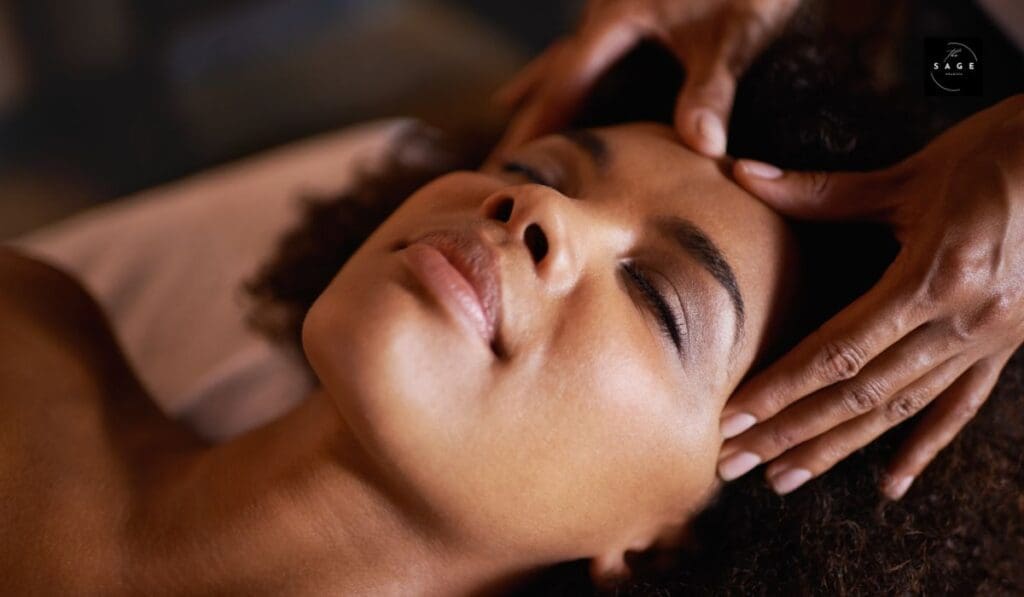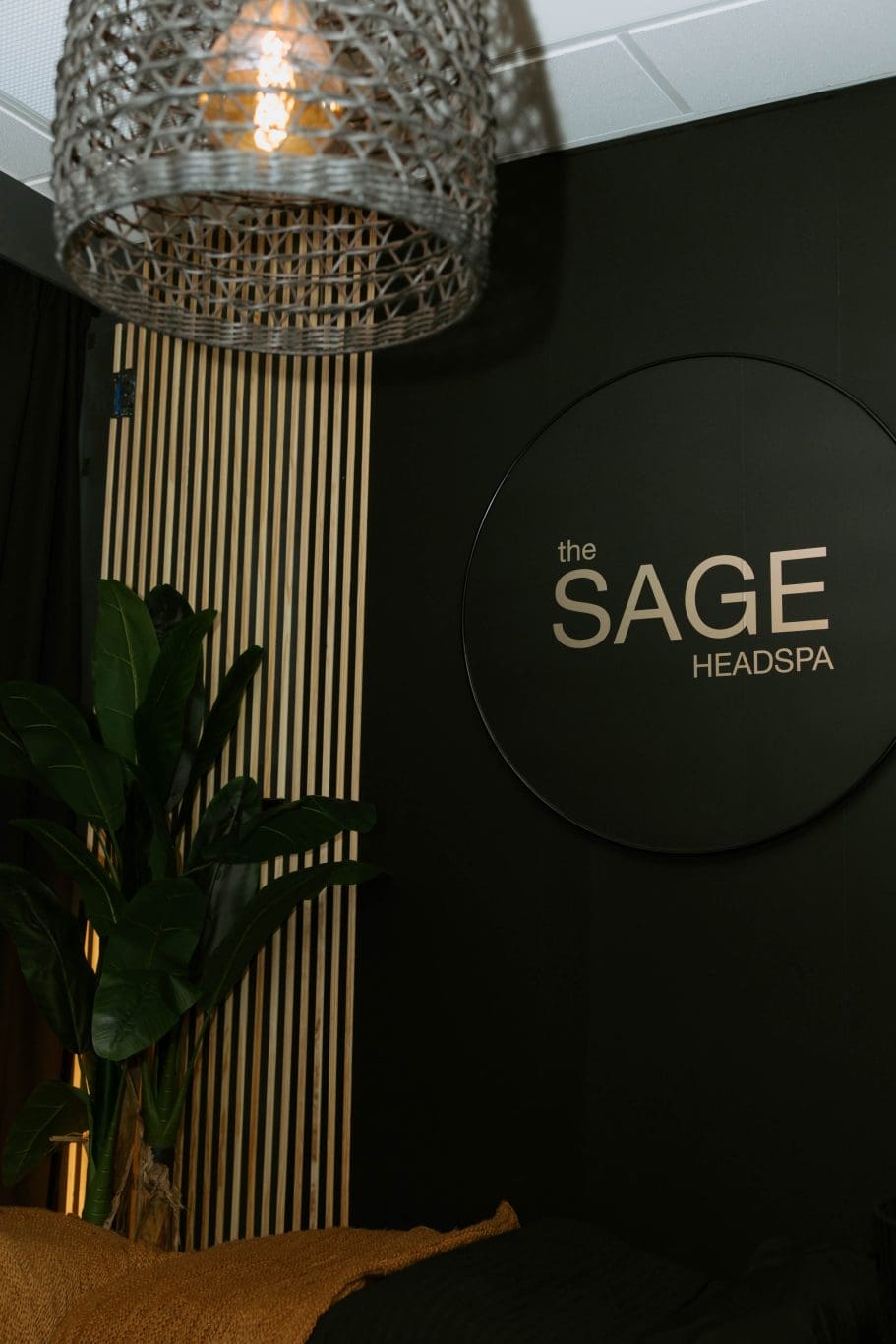In the bustling world we live in, taking time out for self-care, like a HeadSpa treatment, has become essential for maintaining physical and mental well-being.
One self-care trend that has gained popularity in recent years is the HeadSpa treatment.
Originating from Japan, HeadSpa treatments are a luxurious and therapeutic experience designed to rejuvenate your scalp, hair, and mind.
But the question that often arises is: how usually should you get a HeadSpa treatment? This article delves into the benefits of HeadSpa treatments, factors influencing their frequency, and guidelines to help you determine the ideal routine for your needs.
Understanding HeadSpa Treatments
A HeadSpa treatment is a comprehensive scalp and hair care session that typically includes a range of services such as scalp massage, deep cleansing, exfoliation, moisturizing, and sometimes even aromatherapy and steam treatments.
The aim is to improve scalp health, promote hair growth, relieve stress, and provide an overall sense of relaxation and well-being.

Benefits of HeadSpa Treatments
Scalp Health: Regular HeadSpa treatments help in removing excess oil, dandruff, and dead skin cells, promoting a clean and healthy scalp environment.
Hair Growth: By stimulating blood circulation to the scalp, these treatments can enhance hair growth and strengthen hair follicles.
Stress Relief: The soothing massage techniques used in HeadSpa treatments can reduce stress and tension, providing mental relaxation.
Improved Hair Texture: Nourishing treatments can make your hair smoother, shinier, and more manageable.
Detoxification: Deep cleansing and exfoliation can help detoxify the scalp, removing impurities and buildup from hair products and pollution.
Factors Influencing the Frequency of HeadSpa Treatments
The ideal frequency for HeadSpa treatments can vary based on individual needs and circumstances. Here are some key factors to consider:
Scalp and Hair Condition
Oily Scalp: If you have an oily scalp, you may benefit from more frequent HeadSpa treatments, such as once every two weeks, to control excess oil production and prevent dandruff.
Dry Scalp: For those with a dry or flaky scalp, treatments once a month can help maintain moisture balance and reduce dryness.
Hair Health: If your hair is damaged or prone to breakage, regular treatments can provide the necessary nourishment and strengthening. A bi-weekly or monthly schedule might be beneficial.
Lifestyle and Stress Levels
High-Stress Lifestyle: If you lead a high-stress lifestyle, more frequent treatments, such as bi-weekly sessions, can help manage stress and promote relaxation.
Busy Schedule: If your schedule is tight, monthly treatments can still offer significant benefits without demanding too much time.
Seasonal Changes
Winter: During colder months, your scalp may become drier, requiring more frequent moisturizing treatments.
Summer: In hotter months, sweat and product buildup can accumulate more quickly, suggesting a need for more regular deep cleansing sessions.
Personal Preferences and Goals
Maintenance: If your goal is to maintain scalp and hair health, a monthly treatment may suffice.
Specific Issues: For addressing particular issues like dandruff, hair loss, or intense dryness, more frequent treatments, such as every two weeks, may be necessary until the condition improves.
Recommended Frequency for Different Hair and Scalp Types
Oily Scalp and Hair
For individuals with oily scalp and hair, it’s essential to balance sebum production while ensuring the scalp remains healthy and free of buildup. A bi-weekly HeadSpa treatment can help manage excess oil and prevent dandruff. These treatments often include deep cleansing and exfoliation to remove excess sebum and impurities, as well as balancing products to regulate oil production.
Dry Scalp and Hair
Dry scalp and hair require more hydration and nourishment. Monthly HeadSpa treatments can help maintain moisture balance, reduce dryness, and soothe any irritation. These sessions typically involve moisturizing masks, hydrating scalp massages, and nourishing therapies that replenish lost moisture and restore the scalp’s natural barrier.
Normal Scalp and Hair
For those with a normal scalp and hair, maintaining the health and vitality of both can be achieved with monthly HeadSpa treatments. These treatments provide a combination of cleansing, exfoliation, and nourishment, keeping the scalp and hair in optimal condition without overburdening them with too many products or procedures.
Combination Scalp
Individuals with a combination scalp (both oily and dry areas) may benefit from a customized approach. Bi-weekly treatments focusing on balancing the scalp’s oil production while providing targeted hydration can be effective. These treatments often include a mix of deep cleansing for the oily areas and moisturizing for the dry patches.
Long-Term Benefits of Regular HeadSpa Treatments
Consistent HeadSpa treatments offer several long-term benefits that contribute to overall scalp and hair health:
Preventive Care: Regular treatments can prevent common scalp issues such as dandruff, itching, and inflammation, ensuring a healthy scalp environment.
Enhanced Hair Quality: Consistent treatments improve hair texture over time, making it smoother, shinier, and more resilient to damage.
Stress Management: The relaxation and stress relief provided by regular HeadSpa sessions can contribute to better mental health and overall well-being.
Boosted Confidence: Healthy, beautiful hair can significantly increase your confidence and self-esteem, positively impacting various aspects of your life.
Combining HeadSpa Treatments with Home Care
While regular HeadSpa treatments provide professional care and expertise, maintaining a healthy scalp and hair routine at home is equally important. Here are some tips for effective home care:
Proper Cleansing: Use a gentle shampoo suited to your scalp type to cleanse your hair regularly without stripping it of natural oils.
Scalp Massage: Incorporate scalp massages into your routine to stimulate blood circulation and promote relaxation.
Hydration: Keep your scalp and hair hydrated by using moisturizing conditioners and hair masks.
Balanced Diet: A healthy diet rich in vitamins and minerals supports scalp and hair health from within.
Protective Measures: Protect your hair from environmental damage by wearing hats in extreme weather and using protective hair products.
Conclusion
Determining the ideal frequency for HeadSpa treatments depends on various factors, including your scalp and hair condition, lifestyle, and personal goals.
While bi-weekly therapies may be beneficial for those with oily scalps or high stress levels, monthly sessions can suffice for individuals with normal or dry scalps looking to maintain their hair health.
Ultimately, the key is to listen to your scalp and hair needs and consult with a professional HeadSpa therapist to tailor a routine that works best for you.
By incorporating regular HeadSpa treatments into your self-care regimen, you can enjoy the long-term benefits of a healthy scalp, beautiful hair, and enhanced overall well-being.
If you’re ready to experience the rejuvenating benefits of a HeadSpa treatment, schedule your appointment today at Sage HeadSpa. Your scalp and hair will thank you!
FAQs
What is a HeadSpa treatment?
A HeadSpa treatment is a comprehensive scalp and hair care session that typically includes scalp massage, deep cleansing, exfoliation, moisturizing, and sometimes aromatherapy and steam treatments. It aims to improve scalp health, promote hair growth, relieve stress, and provide relaxation.
What factors determine how often I should get a HeadSpa treatment?
The frequency of HeadSpa treatments depends on the following:
- Scalp and Hair Condition: Oily, dry, or normal scalp types have different needs.
- Lifestyle and Stress Levels: High-stress lifestyles may benefit from more frequent treatments.
- Seasonal Changes: Different seasons can affect your scalp and hair condition.
- Personal Preferences and Goals: Maintenance or specific issues like dandruff or hair loss can influence frequency.
How often should I get a HeadSpa treatment if I have an oily scalp?
For oily scalp and hair, a bi-weekly HeadSpa treatment can help manage excess oil, prevent dandruff, and keep the scalp healthy.
How often should I get a HeadSpa treatment if I have a dry scalp?
For dry scalp and hair, monthly HeadSpa treatments can maintain moisture balance, reduce dryness, and soothe irritation.
How often should I get a HeadSpa treatment if I have a normal scalp?
For a normal scalp and hair, monthly treatments can help maintain optimal scalp and hair health.
How often should I get a HeadSpa treatment if I have a combination scalp?
For combination scalps, bi-weekly treatments focusing on balancing oil production and providing targeted hydration can be effective.
What are the long-term benefits of regular HeadSpa treatments?
Regular HeadSpa treatments offer:
- Preventive Care: Prevent common scalp issues like dandruff, itching, and inflammation.
- Enhanced Hair Quality: Improve hair texture, making it smoother, shinier, and more resilient.
- Stress Management: Contribute to better mental health and overall well-being.
- Boosted Confidence: Healthy, beautiful hair can enhance your confidence and self-esteem.
How can I maintain a healthy scalp and hair routine at home between HeadSpa treatments?
To maintain scalp and hair health at home:
- Proper Cleansing: Use a gentle shampoo suited to your scalp type.
- Scalp Massage: Incorporate scalp massages to stimulate blood circulation.
- Hydration: Use moisturizing conditioners and hair masks regularly.
- Balanced Diet: Eat a diet rich in vitamins and minerals to support hair health.
- Protective Measures: Protect your hair from environmental damage with hats and protective products.
How can I determine the best HeadSpa treatment schedule for me?
Consider your scalp and hair condition, lifestyle, stress levels, and personal goals. Consult with a HeadSpa professional to create a personalized treatment plan that suits your needs.



